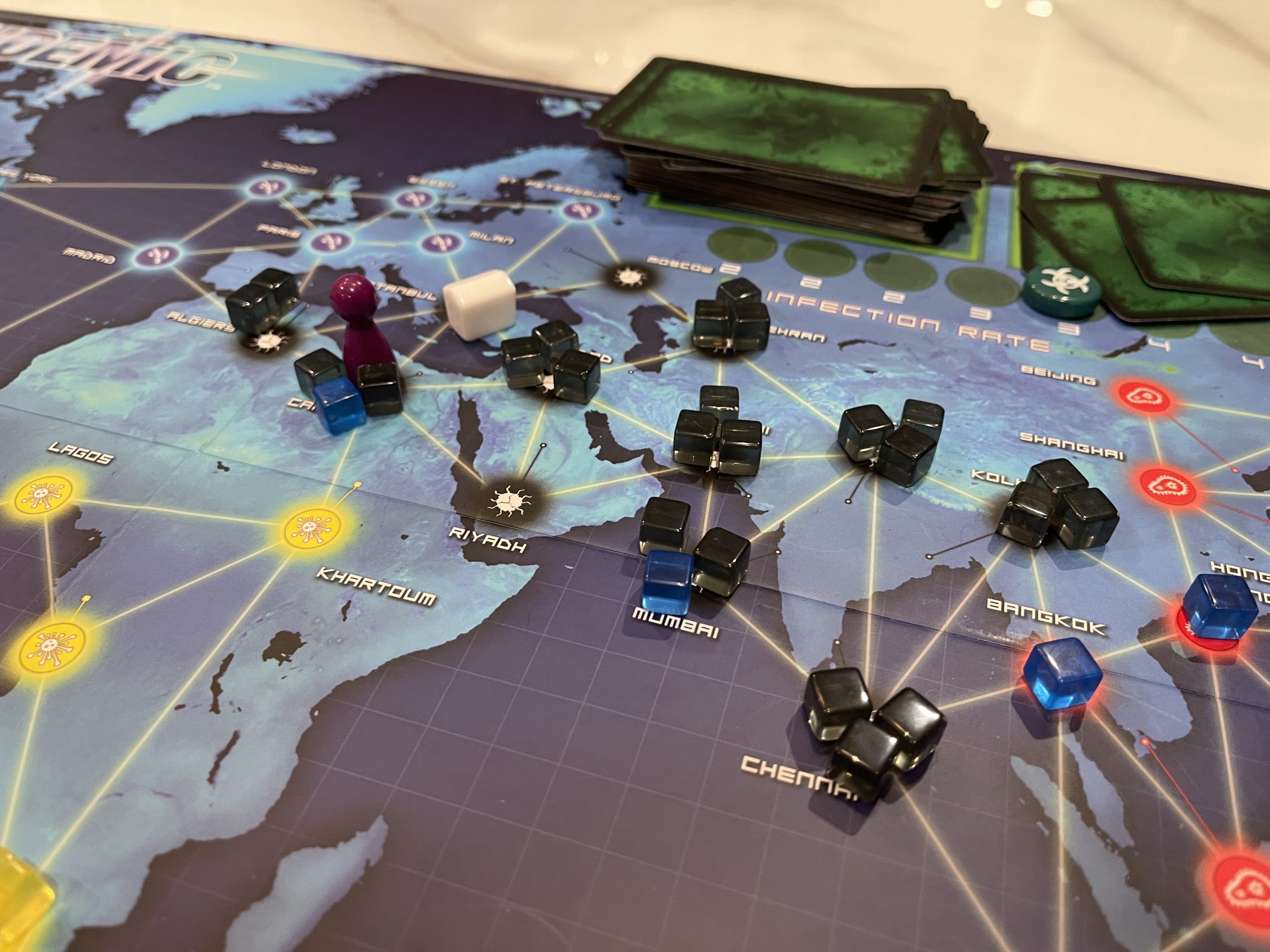I played Pandemic, a collaborative board game for 2-4 players. The objective of the game is to discover cures for all 4 diseases. During their turn, each player does 4 actions (for e.g., moving to an adjacent city, flying to a city whose card they have, build a research center, etc.), draws 2 cards, and then draws the same number of infection cards as the current infection rate. The game ends when the players win, or when one of the lose conditions are reached (8 outbreaks occurring, not enough disease cubes are left when they are needed, or not enough player cards are left when they are needed).
The collaborative aspect of the game heavily influences the mechanics. One way the game was designed to support collaboration is by having each player taking a different role (for e.g., Medic or Scientist) that has different advantages for reaching the winning objective. However, my friend and I quickly realized there were certain combinations of roles that benefit each other. For example, when one of us is the Dispatcher and another one is the Researcher, a strategy we used often was to have the Dispatcher move the Researcher to the Dispatcher’s city (Dispatcher can “move any pawn to any city containing another pawn”), then take a card from the Researcher (any role can “take any card from the Researcher if in the same city”) to fill out the 5 cards we need to cure a disease. I thought this was a particularly OP combination, as collecting cards is very turn-intensive as players can only share cards matching the city they and the receiving / giving player are both in. In comparison, we both found the role of Contingency Planner to be comparatively lacking in terms of what it can benefit to reaching the objective. This was one point where I thought collaboration changes the dynamic of the game — if Pandemic were a competitive game, I think whoever got the Contingency Planner role would complain about how unfair/unbalanced the game was. However, because the goal of the game is collaborative, whenever one of us go the Contingency Planner, the discussion turned to strategizing how to use that role.
The friend that I played with was someone who has played a lot of cooperative games with me before, which also contributed to a particular dynamic that our games had. Based on the instructions provided by the game, players should begin playing with 4 epidemic cards and all cards face up, then proceed to 5-6 epidemic cards with cards kept private so that “everyone has information to contribute to play discussions”. However, the game also noted that “Experienced groups may decide to play with open hands in these games.” My friend and I missed the instruction to keep our cards private when we moved to 5-6 epidemic cards, but we did not encounter any issues (which I infer from the instructions to be that 1-2 players might be very experienced / good with strategy games and take over the discussion) — and rather than experience with Pandemic (neither of us has played the game before), I think it was more because we already had experience with collaborative games in general. I would be interested in examining instructions of other collaborative games similar to Pandemic to see how they balance maximizing collaborative strategizing (by having all cards shown to facilitate discussion) and creating equitable collaborative space between players (by explicitly stating that having everyone contribute to discussions is one of their goals). It seems like both of these designs can help establish an aesthetic of fellowship in different ways.



